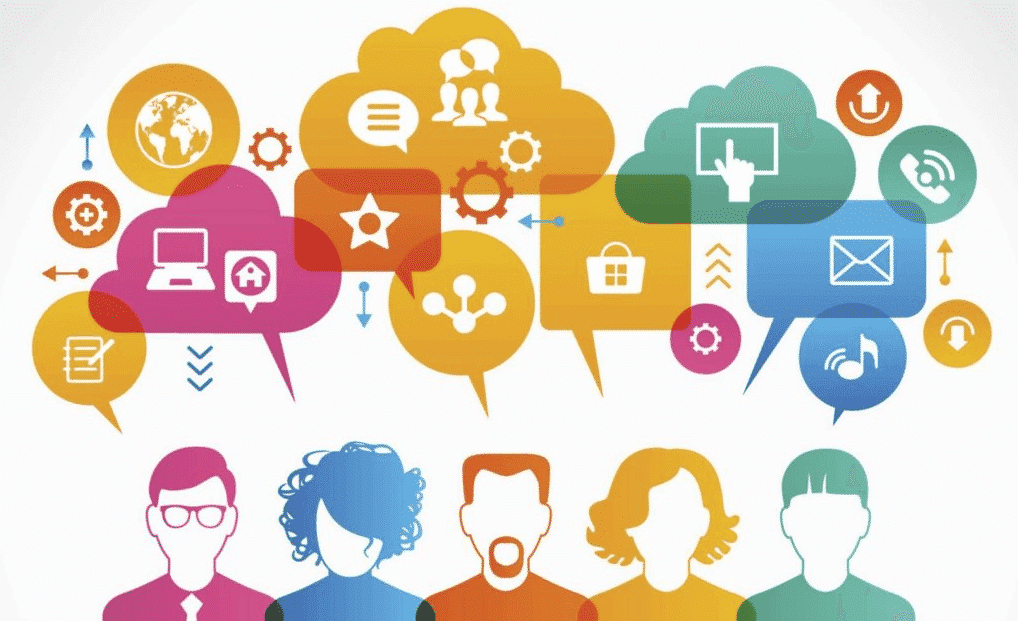If you’re not yet familiar, big data is exactly what it sounds like: enormous amounts of both structured and unstructured data. This massive amount of data presents a variety of problems, and it needs to be organized, stored, and understood in unique ways. The many huge social media platforms are basically data harvesters, collecting and storing vast amounts of information about their users. This makes them ideal marketing platforms.
But it’s not particularly easy to simply take advantage of that data, because there is so much of it and it’s not always clear how to understand or make use of it. So big data is changing the way social media and marketing work together, as marketers develop more tools and methods for studying consumer behavior on social media.
1. Easily Studying the Behaviors of Target Demographics
Image credit: TechCrunch
Every time users like, share, comment, and post, these activities slowly build up a profile that informs the social media giants about their behaviors and preferences. This allows them to determine what kind of posts, pictures, and videos should appear on their newsfeed.
How will this help companies and marketers? For starters, this feature certainly makes it easier to locate and define your target audience. Once you’ve identified your target market through their online habits and preferences, you can then create and send customized messages and ads. You’ll find that people are easier to engage with when you know more about them.
Once you identify your target market, a great way to attract them to you is to buy Followers for your various social accounts. The more Followers, likes, retweets, and shares you get, the more popular you’ll appear online. This will draw more and more people to your account, and if they like what they see they’ll become Followers as well.
2. Finding the best social media for your audience
Image credit: iePlexus
Although people create several accounts across different social media platforms, there is a likelihood that they are most active on just one or two of them. There are several possible reasons behind that. The first one is the simplest explanation, namely preference. There are users that simply prefer one platform over the other because it matches their lifestyle the best.
Another possibility is the preference of their followers or ideal audience. Without a doubt, each user has (or wants) followers for each account. However, each one of them probably devotes more time to the platform where they have the most followers and engagement (which can be monitored by the number of likes, shares, and retweets generated by the average post), which can be monitored with the tools of big data.
After determining which platform to prioritize based on target and engagement levels, brands can then post, share, and even directly address (whether through a tweet or a tag) their target audience. This feature isn’t just a marketing tool, it could also be a customer service tool.
3. Provides access to usually-private consumer information
Image credit: The Bitter Business
It’s been reported by the IBM Marketing Cloud that 90% of the world’s data was collected in the last two years alone, an astonishing figure. 80% of that information is still unorganized, although 20% has already been sorted out and categorized. People today are generating data almost constantly, every time they log in to a network or perform some activity online.
Before the dawn of social media, marketers had to get to know their target audience in more roundabout and time-consuming ways, like conducting surveys. This data was useful, but the ability to peek in on people as they go about their daily lives was something that marketers from the past could only dream of.
4. Altering consumer and marketer behavior
Image credit: Financial Tribune
Social media has had a massive effect on how consumers behave, just as Amazon and eBay did. In fact, new entrepreneurs that don’t sign up with an online merchant (like Amazon and Shopify) usually just post pictures of their products on their accounts and transact through the private messages or the comments section. This is not ideal.
In terms of the customer experience, people turn to social media to read reviews from other consumers. Social media has become a convenient outlet for people to voice their opinion, and this includes products and services. User and customer reviews are trusted to a surprising extent, and, according to a survey by BrightLocal, 88% of consumers trust online reviews as much as personal recommendations!
The comments sections, at least in some cases, have been evolving from crude anything-goes conversations to places where customers can freely express themselves. Instagram’s comment section, for example, has been updated to incorporate threaded conversations. Now, when you reply to a comment, your message will appear nested under that comment instead of just showing up at the bottom of the list.
Image credit: Medium
Aside from encouraging engagement between consumers and brands, this change will promote more interactions between fellow consumers because it will be easier to chat in general. The threaded conversations will also make it easier for companies to respond to multiple customers on a single post.
5. Better tracking for marketing campaigns
Image credit: SingleGrain
Another reason social media is an effective marketing tool is the ability to monitor marketing campaigns and efforts. Facebook Audience Insights, for instance, notifies users whenever one of their pages has been lacking in engagement for some time, among many other useful features.
With these analytics tools, companies and marketers can get more insight into whether their marketing efforts have been working or not. In the same way big data is making social networks smarter, social media is also making companies more informed.
And Audience Insights is just one of the simpler analytics tools. Facebook also has a more complex analytics toolset for developers, which presents user data and engagement in a much more comprehensive way. Instagram has their own Insights tool, Twitter has the Twitter Analytics Dashboard, and YouTube has the very comprehensive YouTube Analytics. None of these tools would have been possible without big data.
Data is only getting bigger and better
Considering the constant pressure on social media, networks will need a lot of support to push through with future innovations. Big data will play a key role in shaping the innovations we’ll see.
If you want to attach some big data to your social accounts, try buying social media Followers for Twitter, Instagram, and other platforms. These bought followers won’t become real customers, but they can attract real users to your accounts. Make a good impression on those organic visitors, and they’ll follow you too.
But there will be mistakes and wrong turns along the way, of course. In order for social media developers to know what to improve upon, they’ll need to know how to interpret all the data they get from their users. It’s easy enough to collect big data, but the value of the future lies in coming up with new and better ways to understand that data.






